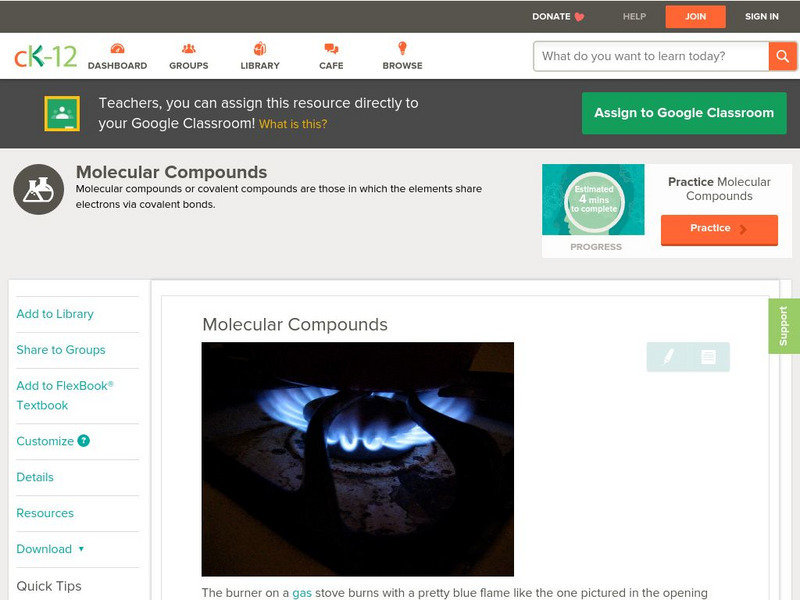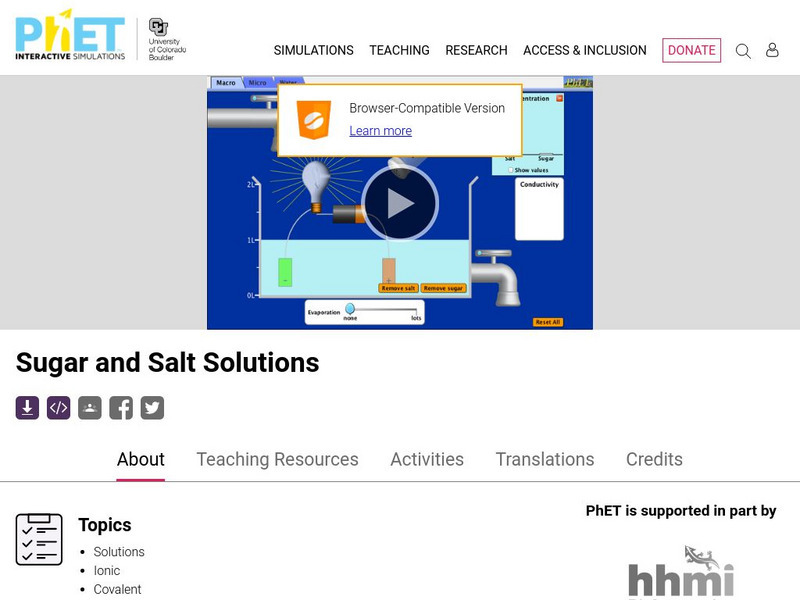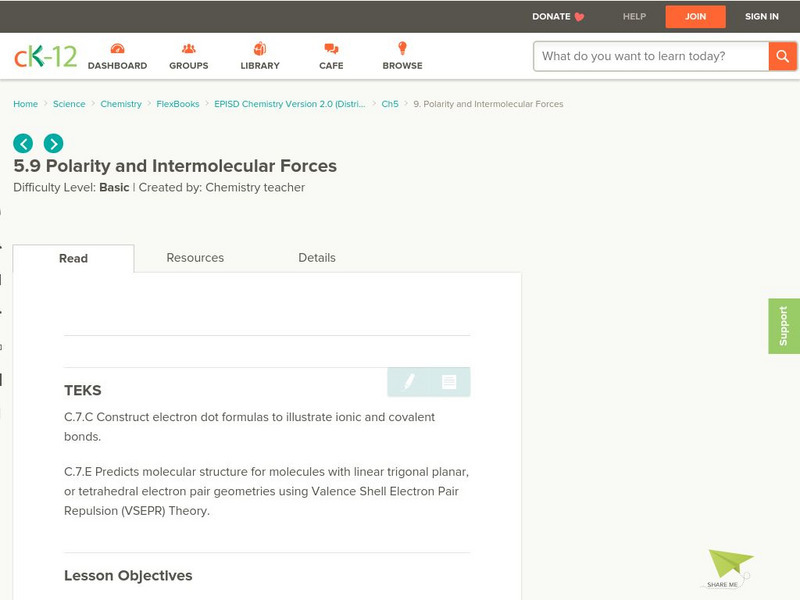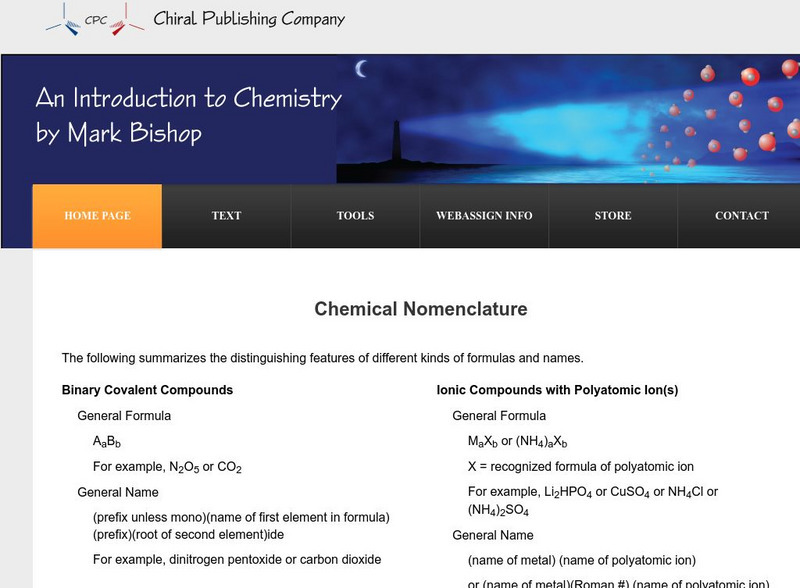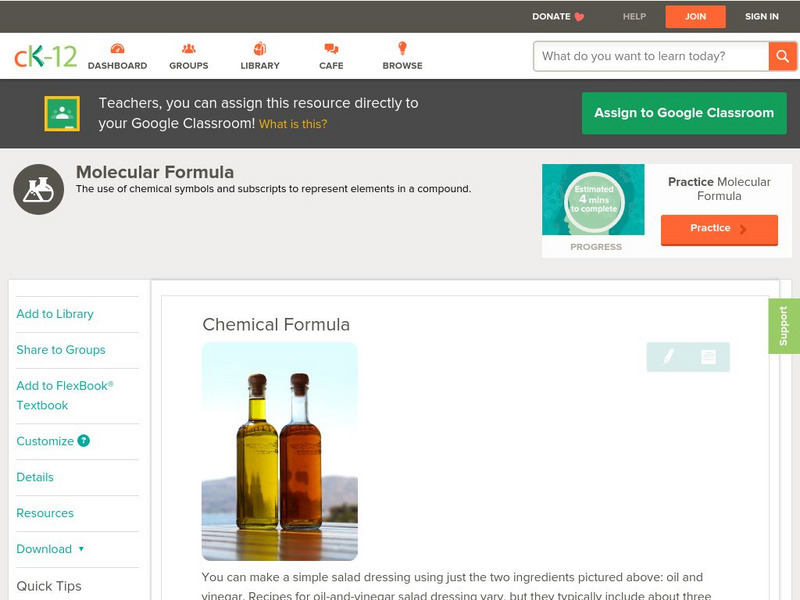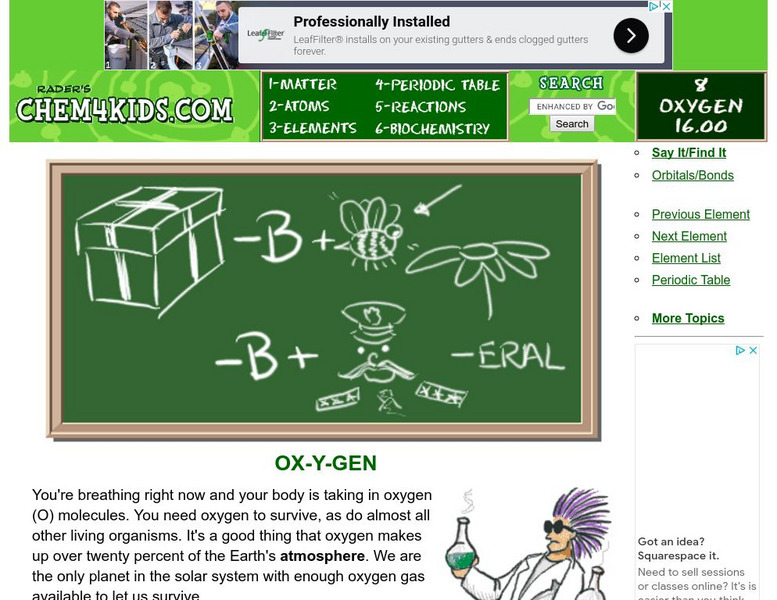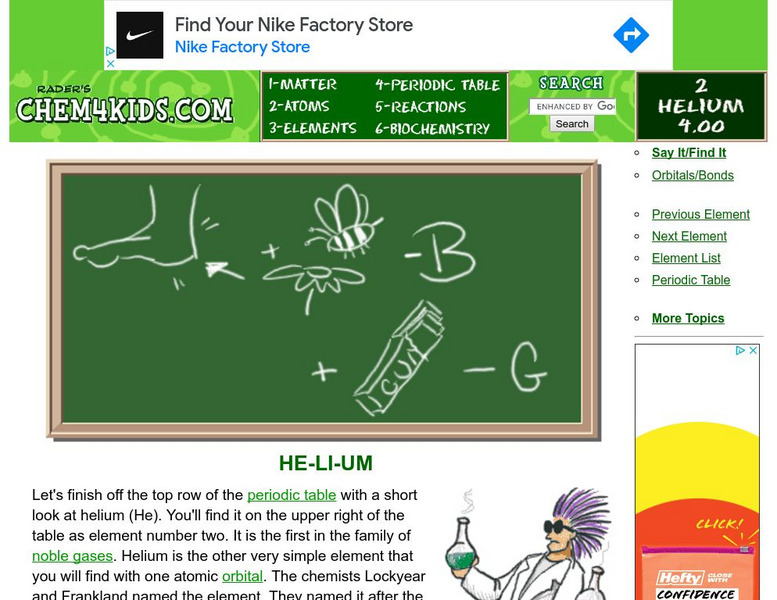Georgia Department of Education
Ga Virtual Learning: Physical Science: Bonding and Chemical Reactions
Through informational text, interactive puzzles, and review questions, students differentiate ionic and covalent bonds and identify the properties of each. They also use oxidation numbers to predict formulas of ionic compounds, name...
CK-12 Foundation
Ck 12: Physical Science: Molecular Compounds
[Free Registration/Login may be required to access all resource tools.] Definition of covalent compound, how they are named and how they differ from ionic compounds.
Utah Education Network
Uen: Conductivity and Bonding
Students will measure the conductivity of several compounds and solutions in order to predict the bond types (ionic or covalent) in the substances tested.
University of Colorado
University of Colorado: Ph Et Interactive Simulations: Sugar and Salt Solutions
What happens when sugar and salt are added to water? Pour in sugar, shake in salt, and evaporate water to see the effects on concentration and conductivity. Zoom in to see how different sugar and salt compounds dissolve. Zoom in again to...
CK-12 Foundation
Ck 12: Polarity and Intermolecular Forces
[Free Registration/Login may be required to access all resource tools.] The following online tutorial describes how the electronegativity difference between two atoms in a covalent bond results in the formation of a nonpolar covalent,...
Chem Tutor
Chem Tutor: Binary Covalent Compounds
An explanation of bonding in binary covalent compounds. Rules for naming binary covalent compounds using common names and system names are also provided.
CK-12 Foundation
Ck 12: Physical Science: Chemistry of Compounds
[Free Registration/Login may be required to access all resource tools.] Explores chemical compounds and how elements form different compounds.
Chem Tutor
Chem Tutor: Chemistry: Compounds
This activity focuses on chemical compounds including Ionic and Covalent Bonds, Valences, Lewis Structures, Binary Covalent Compounds, Radicals or Polyatomic Ions, and much more. It also includes a compound worksheet in which the...
Ohio State University
Ohio State University: Electronegativity & Bond Polarity
Excellent graphics help this page explain the relationship between electronegativity and bond polarity.
Chem4kids
Chem4 Kids: Silicon (Si)
Here you can find some great information about the 14th element in the periodic table, "silicon." Content focuses on silicon's electrons, where you can find silicon in nature and in the home, and how silicon combines with other elements.
Other
University of Texas at Dallas: Attractions in Compounds
Explanation of attractive forces and energy changes involved in bonding.
Mocomi & Anibrain Digital Technologies
Mocomi: Difference Between Elements and Compounds
Find out the difference between elements and compounds, the types of compounds, and how to write a compound formula.
ClassFlow
Class Flow: Ionic & Covalent Compounds
[Free Registration/Login Required] This flipchart presents rules for writing and naming ionic and covalent compounds. There is a short assessment using Activotes.
Chiral Publishing
Chiral Publishing: An Introduction to Chemistry: Chemical Nomenclature
Read and learn about the process in which compounds are named and written. View several examples of written compounds and have access to links that give more information about writing names and formulas for compounds.
Chem4kids
Chem4 Kids: Sodium (Na)
Here at Chem4Kids you can find some great information about the 11th element in the periodic table, "sodium." Content focuses on sodium's electrons, where you can find sodium in nature and in the home, and how sodium combines with other...
PBS
Pbs Learning Media: Chemical Bonds
This interactive activity developed for Teachers' Domain demonstrates how attractive forces between atoms create chemical bonds, resulting in the formation of molecules and compounds.
Chem4kids
Chem4 Kids: Atoms
This site provides a detailed overview of atoms. Content explores an atom's structure, as well as what ions are, how atoms bond, what compounds are (including how to name compounds), and what isotopes are.
Chem4kids
Chem4 Kids: Fluorine
Here you can find some great information about the 9th element in the periodic table, "fluorine." Content focuses on fluorine's electrons, where you can find fluorine in nature and in the home, and how fluorine combines with other elements.
CK-12 Foundation
Ck 12: Physical Science: Chemical Formula
[Free Registration/Login may be required to access all resource tools.] How to write chemical formulae and what they represent about the substance.
Chem4kids
Chem4 Kids: Oxygen (O)
Here you can find some great information about the 8th element in the periodic table, "oxygen." Content focuses on oxygen's electrons, where you can find oxygen in nature and in the home, and how oxygen combines with other elements.
Chiral Publishing
Chiral Publishing: An Introduction to Chemistry: Compounds and Chemical Bonds: Audio Book
Did you ever wonder how or why atoms bond together? This interactive tutorial sheds some light on why bonds form and the difference between ionic and covalent bonds.
Chem4kids
Chem4 Kids: Hydrogen
Here you can find out about hydrogen, the first element in the periodic table. Content includes shell information, where to find it in nature, and why it is helpful to us.
Chem4kids
Chem4 Kids: Helium
Here you can find lots of great information about helium. Learn about its electrons, where it exists in nature, and about the element itself!

